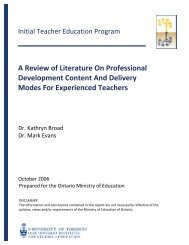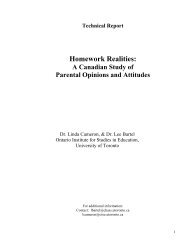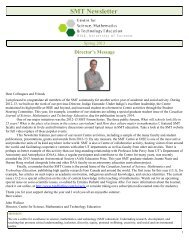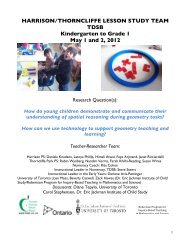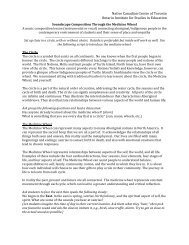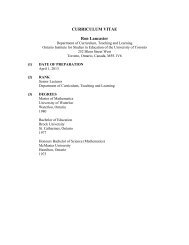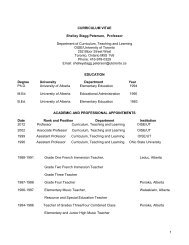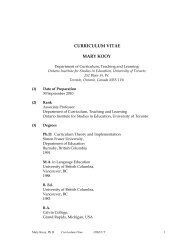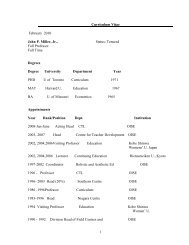The Ontario Curriculum, Grades 9-12 - Ministère de l'éducation ...
The Ontario Curriculum, Grades 9-12 - Ministère de l'éducation ...
The Ontario Curriculum, Grades 9-12 - Ministère de l'éducation ...
You also want an ePaper? Increase the reach of your titles
YUMPU automatically turns print PDFs into web optimized ePapers that Google loves.
D. Earth and Space Science: Space Exploration<br />
D1. Relating Science to Technology, Society, and the Environment<br />
D1.1 research the challenges associated with space exploration, and explain the purpose of<br />
materials and technologies that were <strong>de</strong>veloped to address these challenges and how these<br />
materials and technologies are now used in other fields of en<strong>de</strong>avour (e.g., robotic arm<br />
technology <strong>de</strong>veloped for the space program is used in industry to handle hazardous<br />
chemicals; synthetic materials <strong>de</strong>veloped to protect astronauts are used in fire-fighting<br />
equipment) [IP, PR, AI, C]<br />
Sample questions: Why is radiation a particular hazard for astronauts? What sorts of<br />
instruments are used to monitor radiation levels? What sorts of materials have been<br />
<strong>de</strong>veloped to protect astronauts from radiation? What uses would such instruments and<br />
materials have on Earth?<br />
D3. Un<strong>de</strong>rstanding Basic Concepts<br />
D3.4 <strong>de</strong>scribe the characteristics of the sun and the effects of its energy on Earth and Earth’s<br />
atmosphere<br />
E. Physics: Electrical Applications<br />
E1. Relating Science to Technology, Society, and the Environment<br />
E1. assess the major social, economic, and environmental costs and benefits of using<br />
electrical energy, distinguishing between renewable and non-renewable sources, and<br />
propose a plan of action to reduce energy costs<br />
E1.1 assess social, economic, and environmental costs and benefits of using a renewable and a<br />
non-renewable source of electrical energy (e.g., solar, wind, hydro, nuclear, coal, oil,<br />
natural gas), taking the issue of sustainability into account [AI, C]<br />
Sample issue: <strong>The</strong> production of electricity at nuclear power plants generates very low<br />
levels of greenhouse gases. However, the construction and maintenance of nuclear power<br />
plants is expensive and the long-term storage of nuclear waste may have an impact on the<br />
environment.<br />
Sample questions: Which method of production of electrical energy generates the<br />
greatest amount of greenhouse gases? Which generates the smallest amount? What are<br />
the economic and long-term environmental costs of producing nuclear energy? Of using<br />
solar energy? What are some of the social and environmental effects of oil production?<br />
E1.2 propose a plan of action to <strong>de</strong>crease household energy costs by applying their knowledge<br />
of the energy consumption of different types of appliances (e.g., front-load and top-load<br />
washing machines; catho<strong>de</strong> ray tube [CRT] and liquid crystal display [LCD] computer<br />
monitors) [PR, AI, C]<br />
Sample questions: Which appliances in the home consume the greatest amount of<br />
energy? What are some options for reducing the amount of energy they consume? How<br />
cost-efficient is it to purchase a new energy-efficient appliance when a less efficient<br />
appliance is still in good working condition?<br />
104 Environmental Education, <strong>Gra<strong>de</strong>s</strong> 9−<strong>12</strong>: Scope and Sequence of Expectations, 2011



